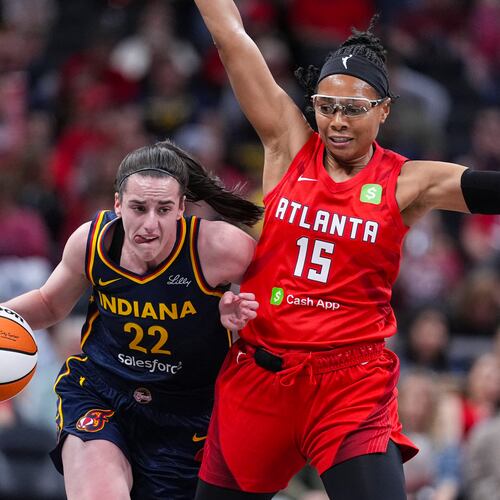There are now 39 bowl games, exclusive of the college football playoff, and I feel comfortable saying it would not be a lesser world if we suddenly had to do without the Motel 6 Cactus, the Nova Home Loans Arizona, the Popeyes Bahamas, the AFR Celebration and the Marmot Boca Raton.
But there is an upside to this relative holiday absurdity, which has seen the bowl count more than double in the last 20 years (there were 18 in 1995). Georgia State, football newbie and heretofore punching bag, has a platform.
Never mind that the platform is the Cure Bowl. Never mind that this is a first-year bowl matching two non-Power-5 conferences (Sun Belt, American Athletic) and schools (Georgia State, San Jose State) largely ignored in their major market homes. Georgia State coach Trent Miles took over a fourth-year program in 2013 and went 0-12, 1-11 and 2-6 this season before seeing his team win four straight to become bowl eligible.
In short, the Panthers won more games in their last four than in their first 32.
Ripley’s Believe It Or Not has the two-headed goat.
The bowl season has Georgia State.
I mean that as no disrespect to Georgia State. The first time I went to Ripley’s I mostly wanted to see the two-headed goat. It was cool. But this is even better — and everybody’s real, not stuffed.
“I think it will really hit me when it’s all over,” Miles said. “To get to this position this fast in this program, it’s amazing.”
Miles is certain to get a nice contract extension, like basketball coach Ron Hunter did after leading the Panthers to its first Sun Belt title and an NCAA tournament. Miles doesn’t have the celebrity status of Hunter. But Hunter had the YouTube advantage of tearing his Achilles during a celebration after winning the Sun Belt title, then coaching in the NCAA tournament on a rolling stool, then tipping on national TV over during another celebration.
Miles stood up from his chair Tuesday and showed media members a scar on the back of his foot, a reminder of when he tore his Achilles during a lunch time hoops game several years ago at Fresno State.
“And I didn’t need a stool,” Miles said, smiling.
He has a beard now. He grew it as part of no-shave November for cancer awareness and hates it.
“But I can’t shave it now. Superstitious,” he said.
Since mid-November, he also has made a practice of buying three dozen doughnuts every Thursday: a dozen vanilla with rainbow sprinkles for his family, and a dozen glazed and a dozen chocolate covered to bring to work.
“I can’t stop now.We’re winning,” he said. “Everybody has to walk into my office on Thursday and take a doughnut. I don’t care if they eat it.”
He has other superstitions but he would rather not disclose them for fear of public humiliation. Also, why disturb the unknown forces that led to all of this?
Georgia State’s play had improved this season and it had the Sun Belt’s best quarterback in Nick Arbuckle (more than 4,000 yards passing and 26 touchdowns). But through eight games, the Panthers still had been doing just enough to lose.
Then, “One day, they just got it,” Miles said.
They defeated Texas State, South Alabama and Troy. They were three-touchdown underdogs going into the season’s final game at Georgia Southern, but pulled off the mother of all Ripley’s results: a 34-7 win in Statesboro, easily the Panthers’ best performance in their six-year existence.
During the final minutes of the games, Miles stood on the sideline, watching the clock, doing math equations in his head, taking off a minute here, two minutes there. “I’m thinking, ‘OK, they have an option offense, they’ll need this much time to score,’ things like that.”
He didn’t let his mind consider the implausible end result until less than two minutes remained and senior linebacker Joseph Peterson walked up to him.
“So I’m doing this math and Joe comes up and says, ‘We’re going to a bowl game coach.’ And I thought, ‘Holy (bleep). We’re going to a bowl.’ And I turn around and I see guys hugging each other and saying, ‘Bowl game. Bowl game.”
It didn’t have to be on New Year’s Day. It didn’t have to be the Orange or Sugar or Cotton. For a team that lost 37-3 to Appalachian State in October, it felt the same.
“Our kids are no longer on that dark side any more,” Miles said. “They know how to win.”
This will help recruiting. It should help with the program’s visibility. The long-term sustainability of the program remains in question because the Panthers still draw connect-the-dot crowds in the Georgia Dome, but the team has a new weight room by its practice field now and the potential of a new facility and more manageable stadium on the Turner Field site could be a major boost.
“When you start winning, people start showing up,” he said.
That remains to be seen. But it wouldn’t be the program’s least likely development.
About the Author
Keep Reading
The Latest
Featured

